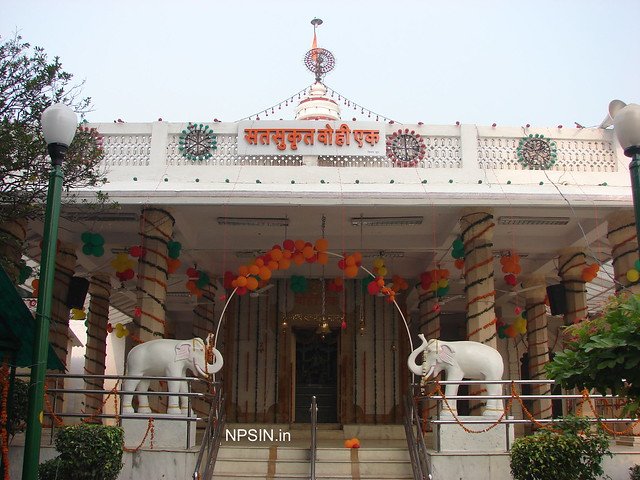Introduction:

Mahatma Gandhi, frequently called the Father of the Country, was a key pioneer in India’s battle for opportunity from British run the show. But his objectives weren’t almost legislative issues. Gandhi moreover worked difficult to bring approximately social changes, particularly in battling against untouchability and the caste framework in India. In Modern Delhi, two critical sanctuaries, Birla Mandir and Valmiki Mandir, were portion of his endeavors for social change.
Birla Mandir:

Birla Mandir, also known as Lakshmi Narayan Sanctuary, could be a sanctuary that was introduced by Mahatma Gandhi on Walk 12, 1939. Gandhi concurred to introduce the sanctuary on the condition that individuals of all castes would be permitted to enter. This was a noteworthy step towards breaking down the boundaries of the caste system and advancing equality. The sanctuary encompasses a plaque on the door declaring that anybody can enter this sanctuary, in any case of caste or social status.
Valmiki Mandir:

On the other side of Mandir Marg stands Valmiki Mandir, a sanctuary devoted to Maharishi Valmiki, the creator of the Hindu epic Ramayana. Mahatma Gandhi remained at Valmiki Mandir for 214 days from April 1, 1946, to June 10, 1947. Amid his remain, he utilized the sanctuary as a research facility to battle against untouchability. The nearby Valmiki community, who were generally uneducated sweepers, began an association with Gandhi, and he started educating them.
Education as a tool for change:
Mahatma Gandhi believed that education was a powerful tool to improve the lives of marginalized communities, including the Valmiki community. He observed that a lack of education kept these communities trapped in poverty and discrimination. So, he decided to make it his mission to teach the children of the Valmiki community.
During his 214-day stay at the Valmiki Mandir, Gandhi started classes for the children, teaching them basic reading and math skills. He was a strict teacher, holding classes in the morning and evening. He even insisted on cleanliness, scolding students who didn’t take a shower before attending his classes.
Gandhi didn’t just focus on children; he also began a night school for adults, teaching them basic education and job skills. He believed that everyone, regardless of caste or social status, had the right to education.
For Gandhi, education was not just about imparting knowledge; it was about empowering marginalized communities to break free from poverty and discrimination. He saw education as a way to make people self-reliant and contribute to the progress of their communities.
Gandhi’s efforts had a significant impact. Many of the children he taught went on to pursue higher education and became teachers, doctors, and engineers. The night school for adults equipped them with skills to find better jobs and improve their living conditions
Legacy:
Gandhi’s bequest is still important nowadays, as social shameful acts proceed to hold on in numerous parts of the world. His message of non-violence and serene challenge proceeds to resound with individuals around the world. By advancing the thought of correspondence and the significance of instruction, Gandhi’s bequest proceeds to rouse individuals to battle against social shameful acts and work towards a more evenhanded society.
Conclusion:
In conclusion, Mahatma Gandhi’s efforts at Birla Mandir and Valmiki Mandir were significant in promoting equality and fighting against untouchability in India. His legacy continues to inspire people to fight against social injustices and work towards a more equitable society. By promoting the idea of a casteless society and the importance of education, Gandhi was able to inspire generations of activists and leaders who continue to fight against social injustices.




